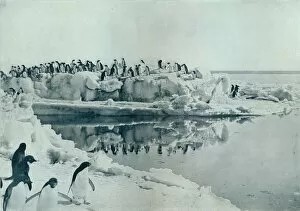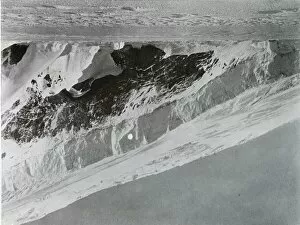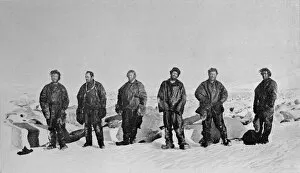G Murray Collection
G Murray Levick, a talented artist and member of the 1911-1913 Antarctic expedition led by Captain Robert Falcon Scott
All Professionally Made to Order for Quick Shipping
G Murray Levick, a talented artist and member of the 1911-1913 Antarctic expedition led by Captain Robert Falcon Scott, captured the beauty and challenges of this icy continent through his incredible artwork. In "Hansens Grave On Cape Adare, " Levick pays tribute to a fallen comrade, immortalizing their final resting place in stunning detail. The launch of the pram in "c1911" showcases the team's innovative spirit as they navigate treacherous waters with determination. Levick's depiction of skua gulls fighting over blubber in "1911" highlights the harsh realities faced by these explorers, where even scavenging birds fought for survival. Meanwhile, "Penguins Promenade" captures the playful nature of these adorable creatures as they waddle across snow-covered landscapes. The awe-inspiring Dugdale Glacier is brought to life in Levick's painting from "c1911. " Its towering ice formations serve as a reminder of both nature's grandeur and its power. In contrast, "The Two Kayaks Ashore" depicts moments of respite amidst this frozen wilderness - two kayaks resting on land after an arduous journey. Campbell finds solace floating in a kayak in Levick's work from 1911; it speaks volumes about finding peace within oneself amid challenging circumstances. Browning at the Igloo Door shows another aspect of life on this expedition - seeking shelter and warmth inside igloos made possible by teamwork. Levicks Camp Among Crevasses portrays both danger and beauty coexisting side by side; it serves as a testament to human resilience against formidable odds. Inside Door of Igloo reveals how light emanating from blubber lamps illuminates their temporary homes while creating an ethereal ambiance. Crevassed Ice at Entrance to Priestley Glacier showcases yet another obstacle encountered during their exploration: navigating treacherous crevices that threatened to swallow them whole.






























